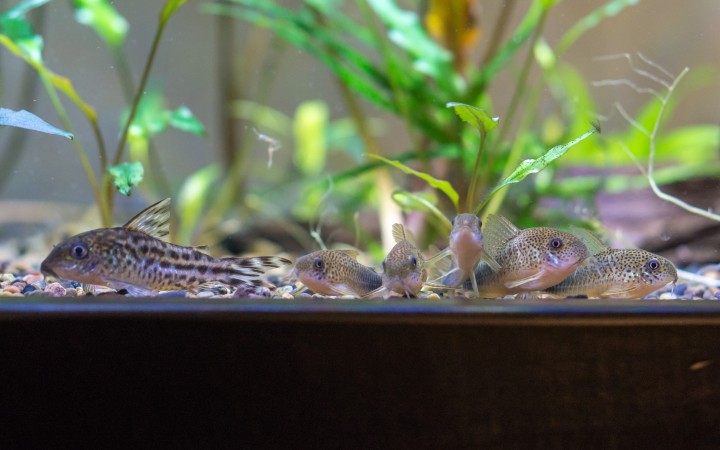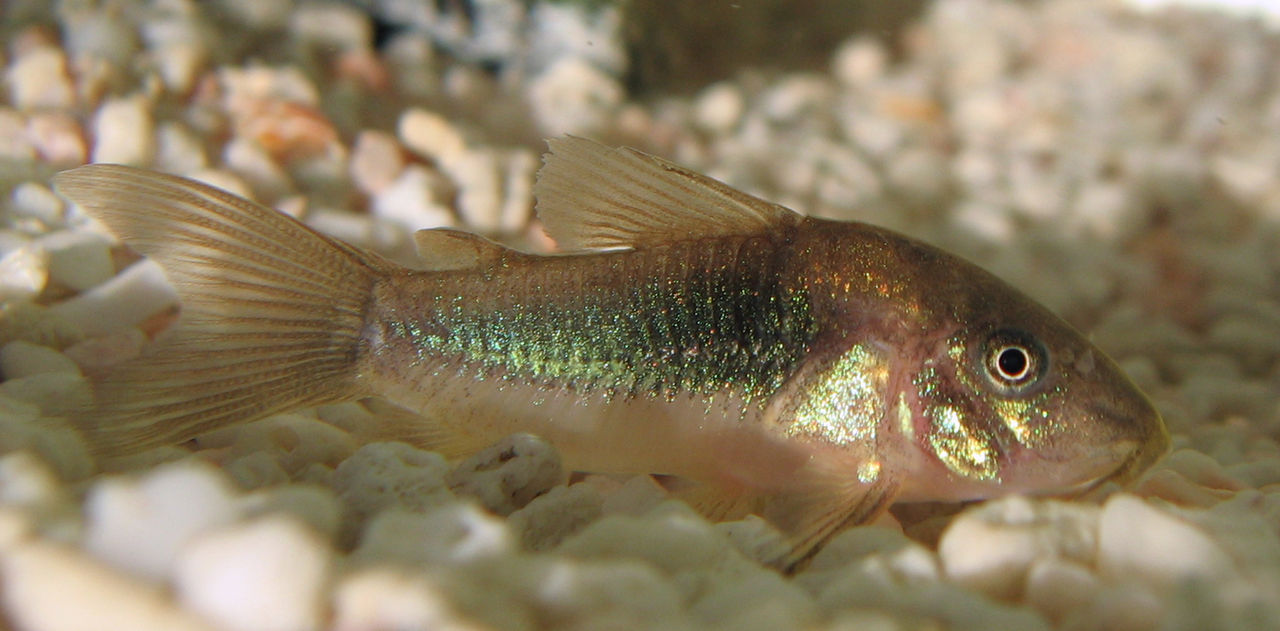5 Types Of Corydoras For Your Aquarium
- Dec 19, 2021
- Rita
- 1950 0 0

Are you thinking of adding a bottom-dweller to your tank? Then a cory catfish may just be the fish for you. There are, however, many types of corydoras to choose from. If you’re a bit confused, try selecting one from our list.
These fish are generally easy to care for. Take a look at our list below for a little background on 5 different cory types.
Types Of Corydoras For Aquariums
1. Panda Corydoras

By Chronotopian - Own work, CC BY-SA 3.0, https://commons.wikimedia.org/w/index.php?curid=21281171
Adult size: 2 inches (5cm)
Lifespan: 10+ years
Tank size: 10+ Gallons
Temperature: 68-77°F (20-25°C)
Tankmates: Peaceful communities
Shoaling: Best kept in shoals
Panda cory catfish are great scavengers that will keep the bottom of your tank free from any leftover food. These little fish prefer to stay near the substrate, but will occasionally surface to take a breath of air. Panda cory catfish get their name from the characteristic black marking around the eyes, just like panda bears have.
They are relatively easy to care for fish as long as you make sure that enough food reaches the bottom of the tank and gives them a varied diet. They are also best kept in shoals and will do well in peaceful community tanks.
2. Pepper Corydoras

By Hiyotada - Own work, CC0, https://commons.wikimedia.org/w/index.php?curid=15442242
Adult size: 2.5-3 inches (6-7.6cm)
Lifespan: 5+ years
Tank size: 15+ Gallons
Temperature: 72-78°F (22-26°C)
Tankmates: Peaceful communities
Shoaling: Best kept in shoals
The pepper cory is possibly the most popular cory kept in aquariums. This stunning critter with its olive tan color with green-black markings is just mesmerizing to look at. It’s best to keep this cory in groups of three or more to keep them happy and healthy.
Fairly easy to care for, you shouldn’t have any problems with this fish. Just make sure the substrate is nice and soft since they like sifting through it. In the process, they will clean up the bottom of your tank quite nicely.
3. Julii Corydoras

By Yo7000 - Own work, CC BY-SA 3.0, https://commons.wikimedia.org/w/index.php?curid=32484408
Adult size: 2.5 inches (6cm)
Lifespan: 5+ years
Tank size: 10+ Gallons
Temperature: 73-79°F (23-26°C)
Tankmates: Peaceful communities
Shoaling: Best kept in shoals
Many owners mistakenly confuse a julii cory with the three stripe cory. As a result, many Julii corys aren’t actually what their owners thought they bought. This stunning fish has an intricate pattern all over its body which is the reason for its popularity.
Julii cory catfish are very easy to care for. They are undemanding when it comes to water temperature and easy to feed. Just like other cory species, they tend to be bottom-dwelling scavengers. Make sure to have some floating plants and shelter since this species does not like the bright light in the aquarium.
4. Bronze Corydoras

By Pharaoh Hound - Own work, CC BY 2.5, https://commons.wikimedia.org/w/index.php?curid=1687851
Adult size: 2.5 inches (6cm)
Lifespan: 5+ years
Tank size: 10+ Gallons
Temperature: 72-79°F (22–26°C)
Tankmates: Peaceful communities
Shoaling: Best kept in shoals
The bronze corydora is a very peaceful variation of the green corydora. Unfortunately, this species is often injected with dye to enhance its colors. If you suspect that’s what happened to a particular fish, avoid buying it. These fish often come with long-term health problems.
Like other corys, they are very easy to feed and care for as long as you buy a healthy specimen. They prefer to scavenge in the substrate and will get along with other peaceful community fish. Keep in mind they aren’t tolerant of salt at all so remove them if salt is ever required in your tank.
5. Skunk Corydoras

By Pia Helminen - Own work, CC BY 2.5, https://commons.wikimedia.org/w/index.php?curid=1739107
Adult size: 2 inches (5cm)
Lifespan: 5+ years
Tank size: 10+ Gallons
Temperature: 72-79°F (22-26°C)
Tankmates: Peaceful communities
Shoaling: Best kept in large shoals
Skunk corydoras are frequently confused with the long-nosed arched cory. Like other corys, these little fish are very peaceful and can be kept in community tanks. Make sure to keep a large shoal of them together.
They are fairly easy to care for as long as you give them the proper food and substrate. They do best kept in a planted tank with lots of areas to hide in. Make sure any foods fed reach the bottom for these fish. They won’t usually surface to get food.
Final Thoughts
If you’re thinking of getting one of these fish for your tank, you definitely won’t be disappointed. Remember to take care when handling them. They have sharp spines on the fins that may get stuck in the net or cause you injury.
Happy fish keeping!







About author